Sea eagle numbers in Scotland predicted to soar
- Published
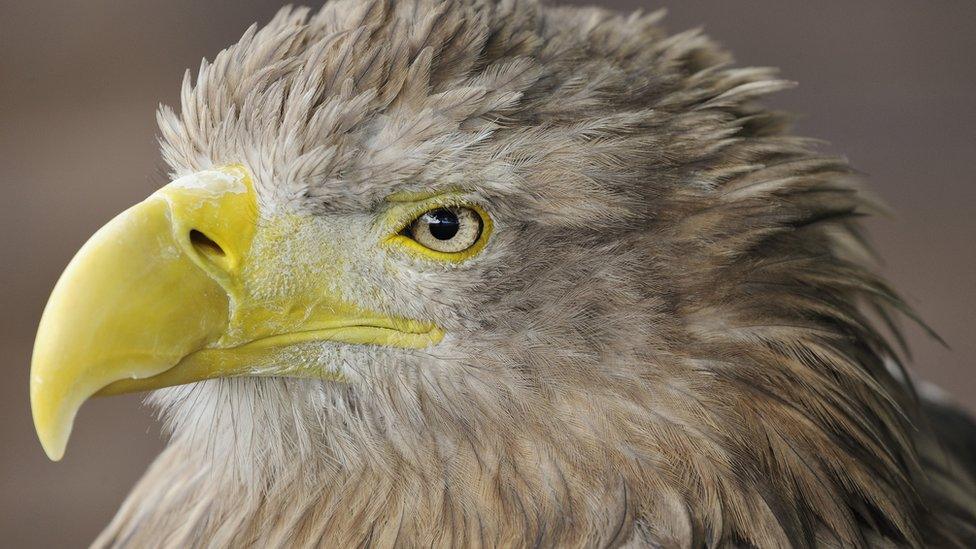
The large raptors became extinct in Scotland in the 1910s
Numbers of white-tailed eagles, also known as sea eagles, could rise from 106 pairs of birds to 221 pairs in less than 10 years, a new study claims.
Research commissioned by Scottish Natural Heritage (SNH) predicted the growth to the year 2025 and beyond.
By 2040, the researchers suggested there could potentially be between 889 and 1,005 pairs.
However, the study added the top figure may not be reached because of a lack of suitable territory.
There have been three release phases to re-establish the large bird of prey, which became extinct in Scotland in 1917.
Two releases occurred on Scotland's west coast - on Rum from 1975 to 1985 and in Wester Ross. The third release was in Fife on the east coast from 2007 to 2012.
The report, authored by researchers at RSPB's Centre for Conservation Science, modelled a range of scenarios to predict the potential size of the sea eagle population, including scenarios with no limits on population growth.
Other scenarios included limits such as availability of suitable habitat, food and nest sites.
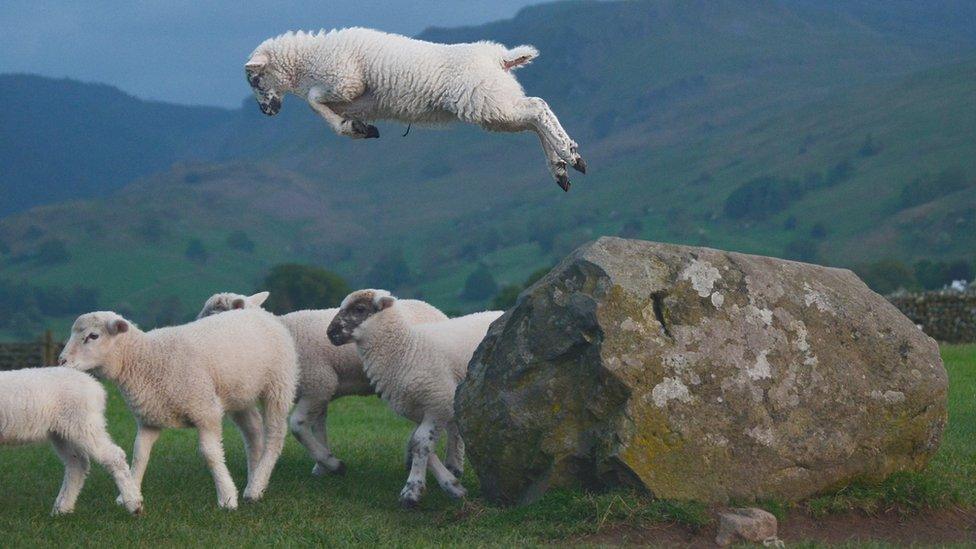
Crofters and farmers have concerns about the large eagles' impact on livestock
The return of sea eagles, the UK's largest bird of prey, to Scotland, and also increases in their numbers, have been the subject of fierce debate.
The eagles attract wildlife tourists to remote and rural parts of the Highlands and Islands.
But some farmers and crofters in these areas have told of the raptors taking lambs.
Five years ago, the Scottish Gamekeepers Association (SGA) raised concerns about whether sea eagles could differentiate between children and their natural prey.
The comment followed an incident where a senior clergyman in Abernethy, in Perthshire, was injured by a young eagle as he tried to scare it away after it attacked one of his geese.
The SGA called for a public inquiry into the impact of the reintroduction of the birds on the east coast.
RSPB Scotland described the small child claim as "alarmist nonsense".
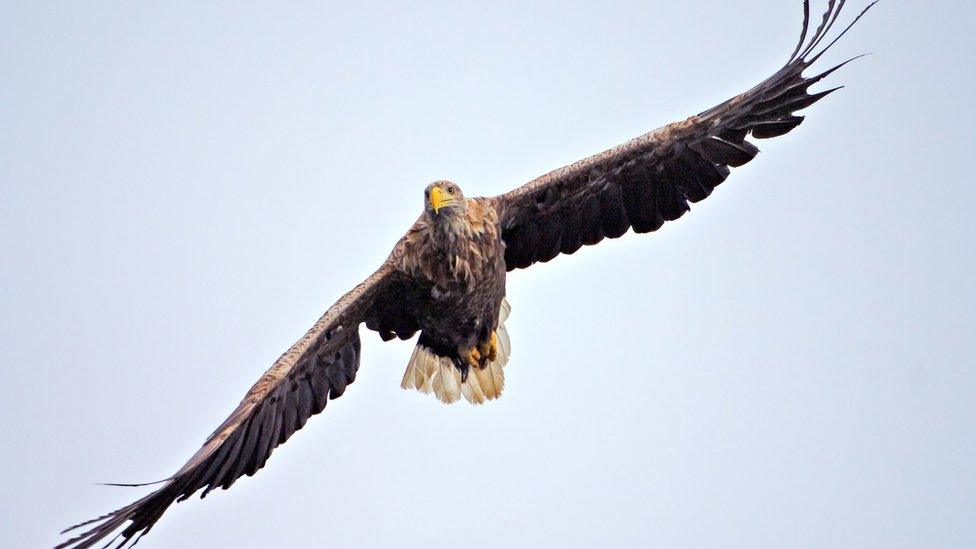
Sea eagles are Scotland's largest bird of prey
Environment Secretary Roseanna Cunningham said the newly-released report from SNH showed the return of white-tailed eagles to Scotland was a "genuine conservation success story".
She said: "That success has not been achieved easily, and I pay tribute to all of those whose efforts over many decades have helped us reach this point.
"This story also demonstrates the importance of working together to protect and enhance our natural environment.
"That's why I also want to thank the many farmers and crofters who are working with us to find a way to ensure that they and the eagles can co-exist. Successful reintroduction projects must work with stakeholders, as well as wildlife."
'Dramatically increase'
Andrew Bachell, SNH's director of policy and advice, said some farmers and crofters have "serious concerns" about sea eagles taking lambs.
He said: "We are working with NFU Scotland, local stakeholders and others to thoroughly understand the part sea eagles play in livestock losses, and we're committed to working together to find solutions to allow sea eagles and livestock farmers to co-exist."
Angus MacFadyen, chairman of NFU Scotland's environment and land use committee and a sheep farmer from Argyll, said the report was a "valuable addition" to the debate on sea eagles and their impact on livestock.
He said: "It clearly flags up the fact that the sea eagle population and range is likely to dramatically increase in the coming years, and underlines the vital importance of finding ways in which to reduce predation and conflict.
"This effort is something NFU Scotland is fully committed to."
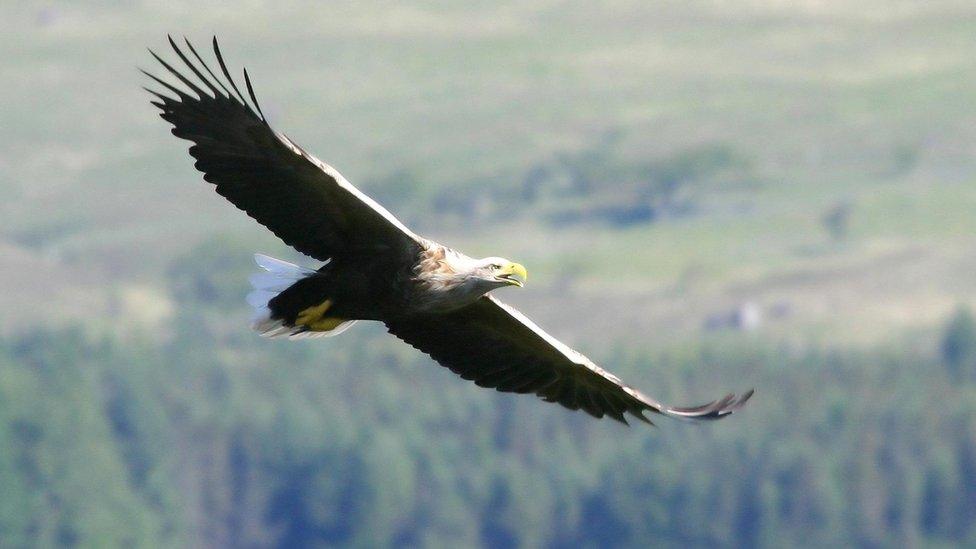
Since the 1980s sea eagles have been released in the Highlands and Islands and Fife
Duncan Orr-Ewing, head of species and land management at RSPB Scotland said: "We can be proud that the sea eagle is once again a key part of Scotland's internationally renowned wildlife spectacle, enthusing local people and tourists alike.
"Our population modelling work is showing that we can expect sea eagle numbers to gradually increase, and re-colonisation of much of the former range across Scotland will take place. Scientific evidence of this type will continue to play a critical role in determining future conservation actions."
- Published27 September 2014
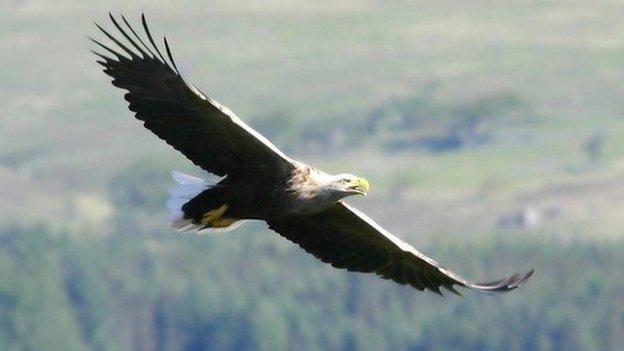
- Published21 August 2012
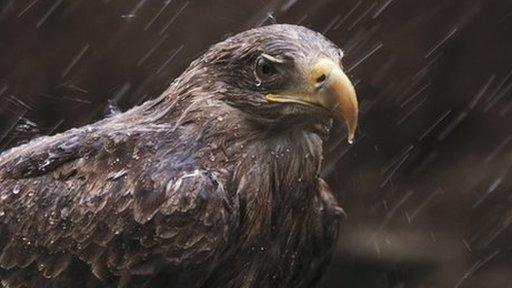
- Published20 June 2012
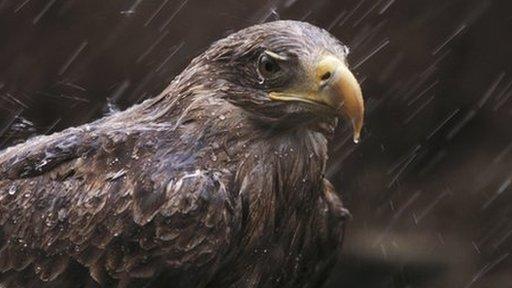
- Published11 February 2012
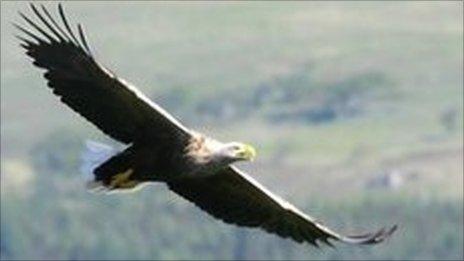
- Published2 September 2011
